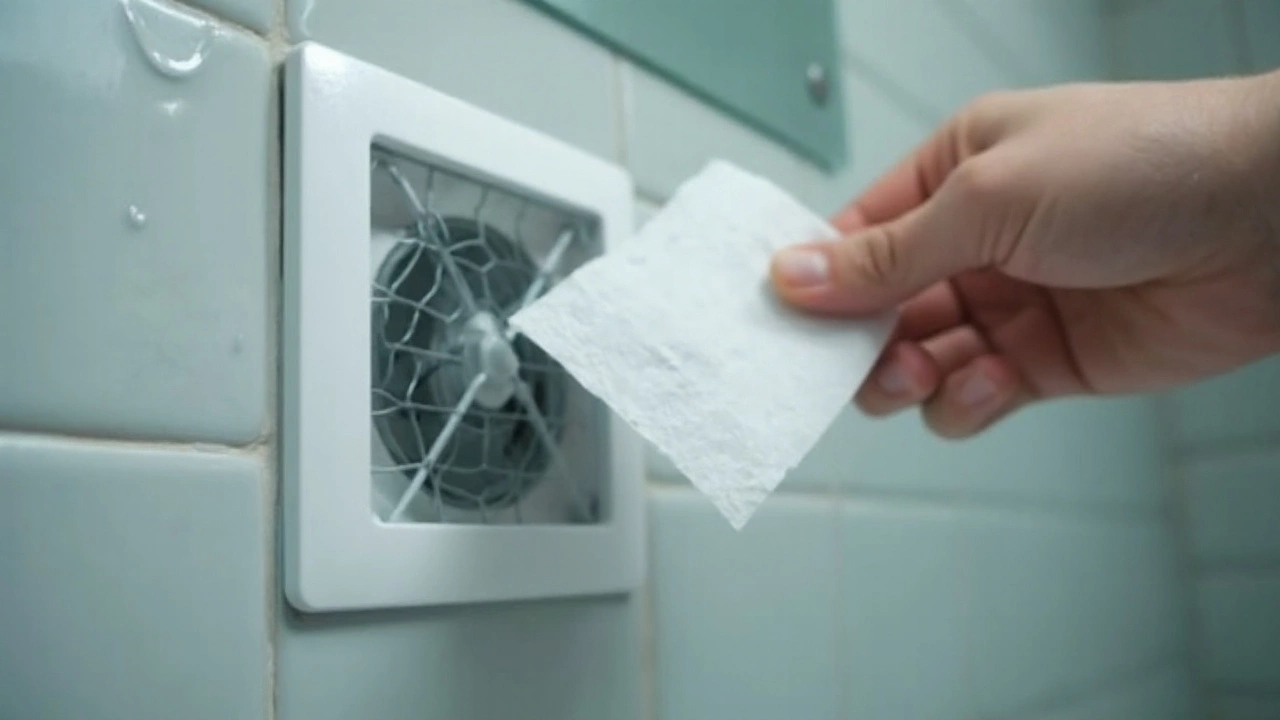Ever wondered if your extractor fan is secretly slacking off? Maybe the kitchen’s always steamy, or your bathroom mirror just never seems to clear. Quiet fans can be sneaky, giving you a false sense of security while quietly failing at their one job—pulling moisture, steam, and smells out fast. If you’re like me and don’t want a slow roast every time you cook, or never want to grow mystery mould in the bathroom again, knowing if your extractor fan actually works isn’t just helpful. It’s crucial.
Why a Working Extractor Fan Matters
Extractor fans fight against more than just lingering smells; they’re your home’s silent defenders against moisture, mould, and even structural damage. When Perth gets muggy, moisture clings to everything. Without good ventilation, you’re asking for stained walls, crumbling plaster, and stubborn black mould. In fact, a 2023 home maintenance survey reported that households with broken extractor fans had 35% higher instances of condensation problems and visible mould.
Let’s not ignore air quality. Did you know indoor air can be two to five times more polluted than outdoor air, according to Australia's Department of Health? It’s not only about steaming up the mirror—without working fans, your chances of trapping cooking fumes, dust, and allergens inside go way up. And if you’ve ever had a neighbour complain about curry wafting through the walls, trust me, your fan’s probably not doing its job.
| Problem | With Working Fan | With Broken Fan |
|---|---|---|
| Bathroom Moisture | Low | High |
| Mould Growth | Rare | Common |
| Kitchen Smells | Quickly Removed | Lingering |
| Home Repairs | Minimal | Frequent due to damage |
If you’re renting, don’t brush off the issue—Australian tenancy laws require landlords to provide proper ventilation in kitchens and bathrooms. This isn’t just a comfort thing; it’s about health and safety. So, it’s clear: working extractor fans aren’t a luxury. They’re essential.
Common Signs Your Fan Isn’t Pulling Its Weight
The kicker? Sometimes a fan will spin and light up but still not work. Here’s where you sharpen your detective skills. First, pay attention: does your bathroom stay fogged up for ages, even after you shower? If the fan’s chugging along but not clearing the air, you might have a dead duck.
Listen to the sound. Fans are noisy by nature – new ones whisper, but older fans often roar or rattle. Sudden silence, grinding, clicking, or a new humming could be bad news. Sometimes I catch Liana muttering in the hallway, confused by a fan that now sounds like it’s hosting a party for marbles. Not good.
Smell is another clue. Persistent odours in the kitchen or toilet are a dead giveaway. An extractor should whisk them away in minutes. If smell lingers or seems to get trapped, suspect a problem with airflow or electrical faults.
Let’s not forget the hands-on checks: touch the fan after it’s been running for a bit. Is the cover warm or slightly vibrating? A dead motor often means zero warmth or movement. Wobbling covers may hint at loose parts inside. As for visual checks, fans with dust caked on the grills or brownish moisture stains probably haven’t shifted much air lately.
Animals get involved too. Our cat Whiskers once perched by the bathroom vent for hours, fascinated by the slow, sad whir of an almost-stuck fan. If even your pets look confused, it’s probably not working right.

DIY Tests: How to Really Check your Extractor Fan
Alright, let’s roll up the sleeves. First, the tissue test—easy and effective. Hold a single sheet of tissue paper up to the fan grille while it’s running. If the fan sucks the tissue and holds it in place, your extractor is moving air. If the tissue flutters or drops, airflow probably isn’t strong enough.
Don’t trust the first go? Try a piece of toilet paper instead, especially if your fan is high up or harder to reach. For ceiling fans, stand on a safe ladder and be careful – nobody wants to explain to their spouse how they broke a wrist testing a fan.
Check outside where the duct vents. Can you hear air hissing out, or do you see the vent flap moving? No movement usually signals a blocked or disconnected duct. If possible, poke your hand or a sheet of paper near the external vent when the fan is on. Is there a clear draft?
Another simple check: try steaming up your bathroom by running a hot shower for a minute, then watch if the mist clears quickly with the fan running. In the kitchen, fry something pungent—onions work well—then see if the smell fades within a few minutes of switching on the fan. These "lived-in" tests say way more than reading a user manual.
Need numbers? Some folks use an anemometer (a small device you can order online) to measure airspeed directly at the grille. A typical extractor should push air at 0.5 to 1.5 meters per second at the vent. Too low, and it’s no longer pulling its weight. If you’ve got a humidity meter, compare the room’s humidity before and after a shower. A drop of at least 5-10% means your fan’s got game.
If you're not sure about any wiring, always switch off circuit breakers first. Safety first. I once zapped my fingers on a faulty bathroom fan. There’s not enough cursing in the world for that shock.
Common Problems and How to Fix Them
What ruins a good extractor fan? Usually, it’s simple stuff. Dust and gunk clog up the blades or motor, slowing everything down. According to fan manufacturers, dirty or blocked covers cut airflow by as much as 70%. If cleaning is overdue, grab a damp cloth and a vacuum, switch off the power, and gently scrub the vent cover and reachable blades.
Does the fan spin but make awful grinding noises? That often means worn-out bearings. Motors whine or start slow when they’re close to dying, especially on old units—ten years is pushing it for most extractor fans. Some people in my neighbourhood try spraying WD-40, but that’s just a bandaid; it won’t fix a worn motor. Replacement’s your best bet.
Did the fan stop working entirely? Check your circuit breakers, then inspect the wall switch. Loose or broken connections behind the switch are common culprits, especially if your house is older. For switch-activated fans, flick the switch and listen for clicking sounds—a working relay but non-working fan often means a blown motor.
Ducting is another silent saboteur. Birds, dust, or even small objects can block external outlets. We once found a kids’ toy stuck in a vent outside, causing weak kitchen airflow for months. Remove covers, poke a torch into the duct, and gently fish out any blockages. If your vent is jammed shut by paint or old caulk, airflow will tank.
Some bathrooms use timer-based fans—set to run for a minute or two after the light goes off. But if the timer’s faulty or stuck, your fan might stop too soon. Adjust the timer using the small dial found behind the vent cover, usually marked in minutes.
- Blocked vents (indoors or outdoors)
- Dusty grills or caked extractor blades
- Loose or faulty wiring at the switch
- Dead timers in timed fans
- Age-related motor failures
Don’t forget: if you rent, don’t take apart electrical appliances deeper than their plastic cover—report problems and let the pros or your landlord handle it.

Tips to Make Your Extractor Fan Last Longer
Regular TLC makes a difference. Set a reminder every three months to vacuum the fan grille and wipe away dust. If you live close to the sea—as plenty of us here around Perth do—marine air rusts metal parts. Look out for brown stains, and clean or replace corroded vent covers as needed. A little prevention saves cash down the line.
On busy days, let the fan run a bit longer after steamy showers or a big cook-up. Automatic moisture sensors are handy, but most fans just need an extra five minutes on the manual switch to clear condensation. Always check ducting during home maintenance days, poking around outside if airflow’s lagging or animals show unusual interest.
If you plan on upgrading, look for models with higher extraction rates (measured in cubic metres per hour—CMH) and low-noise ratings. For the average Aussie bathroom, a 75-100 CMH unit is a practical baseline, while big kitchens might need 200 CMH or more. Energy-efficient fans save money and last longer. Don’t forget about backdraft shutters for external vents—they prevent wind pushing smells and cold air back inside.
Finally, trust your senses. If your nose, ears, or hands say something feels off, they’re probably right. These fans aren’t just machines—they’re your first line of defence against damp, mould, and strange home smells. A little attention now means less regret later, and way fewer arguments about that "musty bathroom." Liana can confirm that part.
So next time you flick the switch, ask yourself—did the air just get fresher, or is your extractor fan just putting on a show? Get hands-on, check the airflow, and give that fan the attention it deserves.
